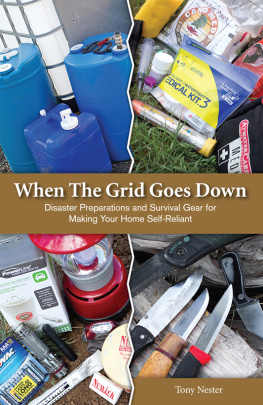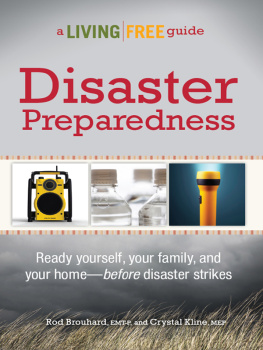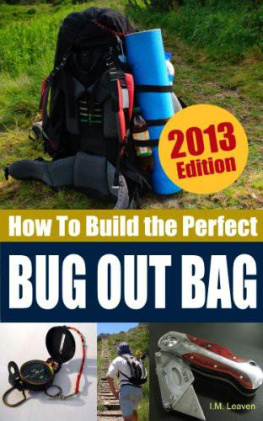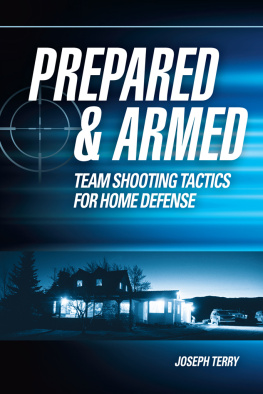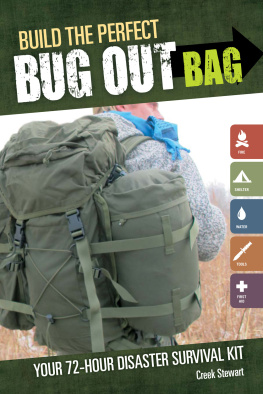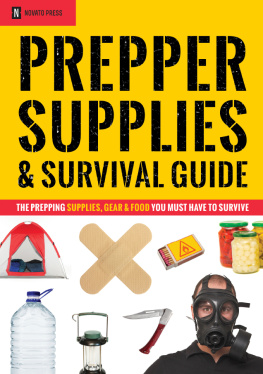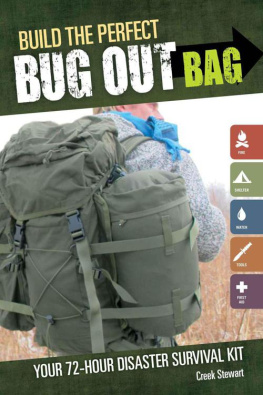The Get Home Bag and Compact EDC Kit
How to Assemble a Complete Bag with Better Gear for Half the Price of Other Bags
by Damian Brindle
Copyright 2019
All Rights Reserved
===> Get dozens of free survival guides, hundreds of videos, 600+ "how to" articles, gear reviews and so much more here: https://rethinksurvival.com
Disclaimer
The material covered within is for informational purposes only. I take no responsibility for what you do with this knowledge and I cannot be held responsible for any property or medical damages caused by the items or information you read about within. I would advise you to check your local laws as it's possible that some of the items or advice I offer may be illegal in some areas, and I would highly advise you against their use in said areas. Moreover, by using any information or material found within, you assume all risks for the material covered. You agree to indemnify, hold harmless, and defend the author, Damian Brindle, from all claims and damages arising from the use, possession or consequences of the information covered. By taking and/or using any informational resources found within, you agree that you will use this information in a safe and legal manner, consistent with all applicable laws, safety rules, and good common sense. You further agree that you will take such steps as may be reasonably necessary or required by applicable law to keep any information out of the hands of minors as well as untrained and/or irresponsible individuals.
Table of Contents
Introduction (Notes to Readers, Plus Free Stuff)
This book is intended to provide useful, actionable survival strategies as quickly as possible. As such, it's written to be fast to read and includes minimal product imagesthough links to buy referenced products will be provided as neededso that it remains small to download.
Grab Your Free 27-Point Checklist
Odds are that you won't remember everything discussed when you're done reading this book. To make your life easier I've created a free, easy-to-reference 27-point checklist that you can download, which outlines everything discussed herein. You'll find a link to it here (so that you can follow along if you like) as well as at the end of this book, but please do read the entire book first.
Now, download your free, easy-to-reference 27-point get home bag checklist here .
Prepare Yourself for Natural Disaster in Only 5 Minutes
Since you clearly understand the need for safety, I want to share with you my unique 5 Minute Survival Blueprint where you'll discover just how to keep your family safe and secure from disasters of all kinds in only 5 minutes a day quickly, easily, and inexpensively.
More Survival Books You'll Enjoy
If you liked what you read when finished you can find more survival books I've written here .
This Books Tone
As noted before, this book is written in a quick, simple, easy to read format. Hence, it is presented in a conversational form and not one that is intended to be grammatically correct. Getting YOU and your family ready for emergencies is the sole focus of this book.
And My Thanks
I also want to thank those folks who took the time to review this book, to offer their own suggestions, and to correct my mistakes. You know who you are.
A Get Home Bag and a Bug Out Bag Are Different
There are a variety of terms that have evolved around the concept of an emergency bag over the years, the two main ones being: bug out bag and get home bag . Other terms include a go bag , grab bag , G.O.O.D. bag , which stands for Get Out of Dodge, and my personal favorite the I.N.C.H. bag , or Im Never Coming Home.
Dont get lost in the terminology. All bags have one common purpose: to gather the supplies and equipment you may need to see you through a short-term emergency of a few hours to weeks, in some instances, while on foot, and without expectation of resupply or assistance until the disaster and its aftermath is over with or, at the very least, until youre in a safer place to ride things out.
Nearly all emergency bags are meant to help you evacuate your home. The traditional bug out bag is the most common example. A bug out bag will include all the gear youll need (e.g., flashlight, knife, compass) and supplies (e.g., food, water) to see you through a few days to a week or longer while you evacuate to a safer location on foot. A bug out bag will almost assuredly be larger and heavier than a get home bag for the simple fact that youre attempting to prepare to survive for days or weeks with only what you have on your back. Imagine the gear and supplies somebody may take while hiking in the backwoods and youve got the right idea of what a bug out bag might include.
A get home bag, on the other hand, is only intended to help you get home, which means theres a difference in expectations and, subsequently, a difference in the gear and supplies youll include in each.
A get home bag, as Ive stated, is only intended to help you get home during an emergency. In fact, you may likely have a bug out bag waiting for you at home. In any case, the major assumption behind a get home bag is that you will be relatively nearby to your home, such as at work or the grocery store, and that youll have a relatively short walk home. As such, a get home bag will contain less gear and supplies, be significantly lighter than other emergency survival bags and, perhaps most important of all: it should attract little to no attention from strangers.
In order to avoid attracting unwanted attentionboth before an emergency strikes and during oneyour get home bag should:
- Not include military patterns (e.g., camouflage) or even be brightly colored as a single monotone color is your best option;
- Not be larger than a typical backpack one might have used to haul books around for school (a large hiking backpack may look out of place);
- Not show any outwardly distinguishing characteristics of being a survival bag, such as gear hanging off the outside or patches and insignia that may indicate it has something potentially useful to others inside.
If, on the other hand, youre not worried about attracting attention then a traditional hiking bagone that distributes weight to your hips with strapswould be best, though, you wont be able to use it as an everyday carry bag due to size.
At the most literal level, your everyday carry bag (commonly abbreviated as EDC) is the collection of items you carry with you in your pockets or in your bag daily. You get home bag is, therefore, an extension of that concept.
Why Choose a Get Home Bag?
To be clear, a get home bag only serves one short-term purpose: to get you home safely on foot when youre already relatively nearby. The expectation is that you may not be able to drive home because the roads are impassable due to traffic congestion, flooded roadways, or downed trees or power lines, to name a few possibilities. In any case, a get home bag isnt meant to help you survive much beyond a single night if you had to, so you could probably tough it out and simply walk home no matter how drenched, thirsty, or tired you were.
Besides, a bug out bag would certainly include everything a get home bag does, plus you would have more survival gear and supplies if you had a bug out bag on your back when you left the house (kept in your vehicle due to size and weight, of course). Wheres the obvious advantage of assembling a get home bag instead?
Id asked myself this very question not too long ago. For many years now Ive always just kept a bug out bag in my vehicle because it surely includes everything I would need if were ever stranded away from home, plus I would have something to rely upon if, heaven-forbid, everything in my home were damaged or destroyed. In fact, I still keep a bug out bag in my own car.
Next page

